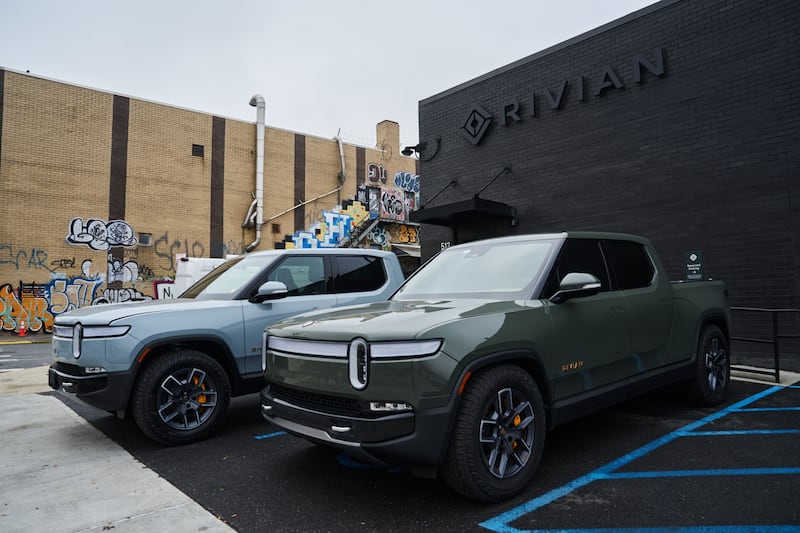It depends on what’s gone wrong. Generally speaking for electric cars, any problem requiring roadside assistance is going to fall into one of three categories: a flat tyre, a flat battery or a big electronic fault.
Across the board, EVs have shown themselves to be broadly more reliable than their petrol and diesel rivals, at least in terms of big items such as motors and batteries. A Which? survey did find that electric car owners had to visit their dealers for issues to be sorted slightly more than was the case for conventional cars – 31 per cent of EV owners, compared to 29 per cent of diesel owners – but these problems were mostly of the software niggle variety, and not the kind of thing that would leave you stranded at the roadside.
However, big problems can of course occur, and in that case the short answer is that it’s extremely unlikely that your EV can be fixed at the roadside. Those big batteries carry lots of voltage and the current rules say that they can only be handled by a trained technician, in a controlled environment, wearing the appropriate safety gear.
What about towing an EV?
When it comes to towing, in general the advice is never, ever tow an EV. Technically, EVs don’t have a neutral gear, and the driven wheels are always connected to the battery, so towing them will cause the car’s regenerative braking system to overload, potentially damaging the motor and the battery.
READ MORE
However, there are some get-out clauses to this. If your car is front or rear-wheel drive, then the likes of the AA have special fold-out towing trailers that lift the driven wheels off the road, allowing the vehicle to be towed safely. However, your car has four-wheel drive and two electric motors, then it really shouldn’t be towed at all, and will need to be recovered on a flat-bed.
There is an exception to that rule, too. Rivian, the US-based electric SUV and pickup truck maker, includes an emergency towing mode in its cars, which not only allows them to be towed with all four wheels on the road, but the cars can actually be safely charged by that towing, although Rivian does say that this is for emergencies only and the cars shouldn’t be tow-charged for long periods. That’s of limited help to Irish consumers for now – Rivian doesn’t sell any cars here yet, although a few have been privately imported – but Rivian and Volkswagen have just signed a €5 billion deal to co-develop new electric car software, so perhaps the emergency towing thing might make it to VW products in the future.

Can I buy a small battery pack that could be carried in the boot and plugged into the car to give me a few extra kilometres if I run out before I get to a working charger, like a jerrycan of petrol or diesel?
If it’s a flat battery, then there are a couple of options. Again, roadside recovery services such as the AA have on-board emergency battery packs that can be connected to your car and deliver a tiny charge, usually enough to get you to a local public charger. Obviously, in Irish terms, this may be of limited help given the sparse nature of the public charging network, but even if it’ll only get you to a slow charger, at least you’re off the side of the road.
Some EVs – Hyundais and Kias especially – also now have V2L (Vehicle to Load) charging, which means they can charge another electric device – such as your car – from their batteries. You do need a special cable for this, however, and obviously you also need a friend with a suitable EV who will come to your rescue.
Can I still open the doors of my EV if the battery runs flat?
In short, yes. It may come as a small surprise, but all EVs actually have two batteries – the big one that drives the electric motors that make you go forwards and backwards, and a smaller 12-volt battery, much like the one used to start the engine in a conventional diesel or petrol vehicle.
This 12-volt battery is what runs systems such as electronic door locks and the like, so yes you can still open the doors when the main battery is flat.
Now, that 12-volt battery has to be kept topped-up in power too, and most EVs do this in the same way that conventional cars do, by charging it as you drive. If it goes dead too, you may have a more significant problem but all EVs with electronic door releases will also have a physical manual override in case of emergencies. Have a look at your owner’s manual and you’ll be able to find out where the mechanical release handles are.
If that 12-volt battery does run itself flat, then you can “jump start” it from another car, using a set of jumping cables, just as you might the dead battery in a conventional petrol or diesel car. However, you need to be very careful with this – check the fine print of your vehicle warranty, as in some cases any unofficial tampering with the car’s electric system – and a jump-start qualifies as just such – could potentially invalidate part or all of the warranty.
Check and see if the car comes with an inclusive roadside recovery service, and call them to recharge your 12-volt battery, as they’re accepted experts and if they do it, it won’t affect the warranty. Beyond warranty concerns, there’s a delicate and important piece of equipment in an EV called a DC-to-DC converter, which allows high-voltage power from the big battery to flow to the low-voltage systems, which run things such as electric windows, seat heaters and so on, and that power also goes through the 12-volt battery.
Incorrectly jump-starting the 12-volt can affect, and potentially even damage, the DC-to-DC converter, and then you’re looking at a monstrous repair bill. For the same reason, don’t try to jump-start a petrol or diesel car using the 12-volt battery in an EV – use a portable battery pack instead.
Finally, what about flat tyres?
Flat tyres can potentially be fixed at the side of the road. All cars have to carry at least a tyre repair kit, with a can of “repair goo” that can be squirted into the tyre to repair small punch-through punctures (such as when you’ve driven over a nail or a screw) and an air compressor to reinflate the tyre.
Of course, this is a temporary fix only, and now you have to go and find a tyre fitter to get the damaged one replaced. Equally, the likes of the AA and mobile tyre fitters can potentially call out to you at the roadside to replace a damaged tyre, although with EVs generally trending towards larger 18,19, and 20-inch wheels, finding a local supplier with the right tyre in stock can be tricky to say the least.




















